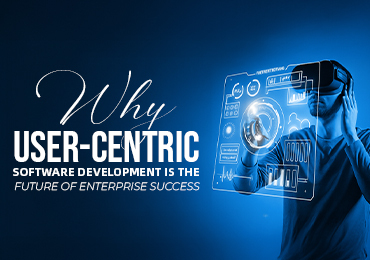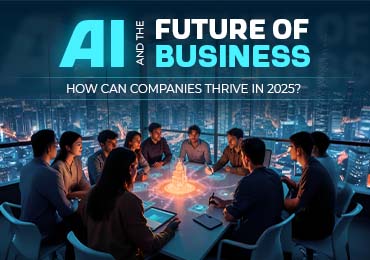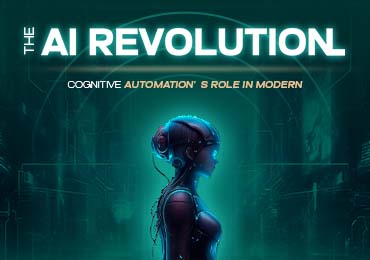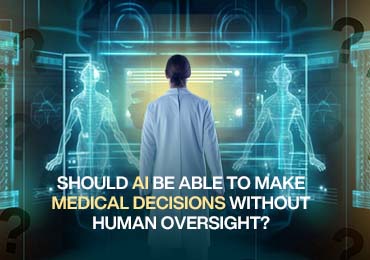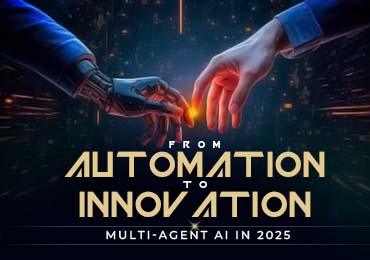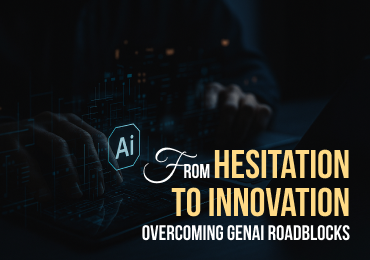- By
- 01 January, 1970
- 1 min Read
Why User-Centric Software Development is the Future of Enterprise Success
In today's fast-paced digital ecosystem, enterprises no longer succeed with generic software solutions. Instead, they thrive with user-centric software development—solutions tailored to their real workflows, challenges, and visions. At Aryabh Consulting Inc., we specialize in designing scalable, secure, and business-first software solutions rooted in deep user understanding and strategic consulting. What is User-Centric Software Development? User-centric software development is an approach that prioritizes the needs, expectations, and challenges of end-users throughout the entire development lifecycle. Unlike traditional models that often follow a rigid, feature-driven path, user-centric development ensures software evolves around real human and organizational workflows—creating solutions that are not just functional but intuitive and scalable. This method goes beyond UX/UI. It incorporates business context, operations logic, employee feedback, data flow mapping, and technology infrastructure—all harmonized into a custom-built digital solution. Key Components of User-Centric Software for Businesses & Enterprises Business Consulting & Analysis: Understanding business pain points, workflows, and user roles before writing a single line of code. Collaborative Design Thinking: Engaging stakeholders early to define intuitive user journeys. Custom Software Architecture: Solutions built from the ground up using modular, scalable, and secure architecture. Agile Development & Testing: Frequent iterations based on user feedback and business goals. Application Integration: Seamless communication across legacy and new systems. Scalable Infrastructure: Cloud-native or hybrid environments that grow with your business. Ongoing Support & Optimization: Continuous enhancements, monitoring, and updates post-deployment. Our Step-by-Step Approach to Building User-Centric Software At Aryabh Consulting, we follow a time-tested yet flexible framework: 1. Discovery & Consultation Our consulting-led model starts with understanding your vision, objectives, and challenges. We don’t sell software first—we listen first. 2. Business Analysis & Requirements Gathering Through workshops, audits, and stakeholder interviews, we outline the real problem areas and define solution goals. 3. Strategy & Roadmap We develop a roadmap for design, development, integration, and scale—aligned with your enterprise’s long-term goals. 4. Custom Software Development We build software that’s robust, extensible, and uniquely yours—you own the code. 5. Integration & Data Management We ensure seamless integration with your existing platforms and create centralized data systems for real-time insights. 6. Deployment & Change Management We manage deployment with training and user adoption strategies to ensure smooth transitions. 7. Continuous Support We stay with you post-launch with performance monitoring, updates, and 24/7 help desk support. Why Consulting Comes First—And Always Should Software consulting is not optional—it’s essential. At Aryabh Consulting, our process begins with in-depth consultations to understand your business model, people, tech environment, and long-term goals. This ensures mutual clarity, aligned expectations, and a solution that fits like a glove. Without consulting, development is guesswork. With it, it becomes a strategic investment Why Businesses Are Choosing User-Centric Development According to a McKinsey report, 70% of digital transformations fail—often due to poor user alignment and lack of stakeholder engagement. In contrast, companies that invest in user-centric design see a 200% higher ROI than those who don’t (Forrester Research). Enterprise leaders are increasingly recognizing that generic software leads to: Poor adoption Low productivity Expensive workarounds Integration challenges User-centric solutions, like those we deliver at Aryabh, overcome all of the above—making them the smarter choice for enterprises in every vertical. Why Choose Aryabh Consulting for User-Centric Software? We’re not just developers—we’re problem solvers and strategic partners. Here’s what sets us apart: Customization Over Templates: Our solutions aren’t confined to pre-built tools; we build around your business—not the other way around. Code Ownership: You retain full ownership of your solution—allowing future upgrades and flexibility. Cross-Domain Expertise: Whether it's healthcare, manufacturing, or finance—we build domain-aligned solutions that deliver real value. Data & Security First: Every solution is built with cybersecurity, compliance (HIPAA, GDPR), and performance optimization in mind. 24/7 Support: Our team is available round-the-clock for help desk, performance monitoring, and iterative enhancements. Aryabh’s Unique Approach At Aryabh Consulting, we focus on three guiding pillars: Consult First, Code Later: Strategy before execution ensures precision Build What You Actually Need: No fluff, no bloat—just impactful solutions. Scale Without Limitations: Architecture that grows with your business, not against it. Ready for Real Digital Transformation? If your enterprise is seeking reliable, scalable, and intelligent software tailored to your operations and users, you’re in the right place. Aryabh Consulting brings deep domain expertise, future-ready tech, and a consulting-first mindset that sets us apart in a noisy software market. Let us help you rethink what software can do for your business. We love to hear from you Contact Us
